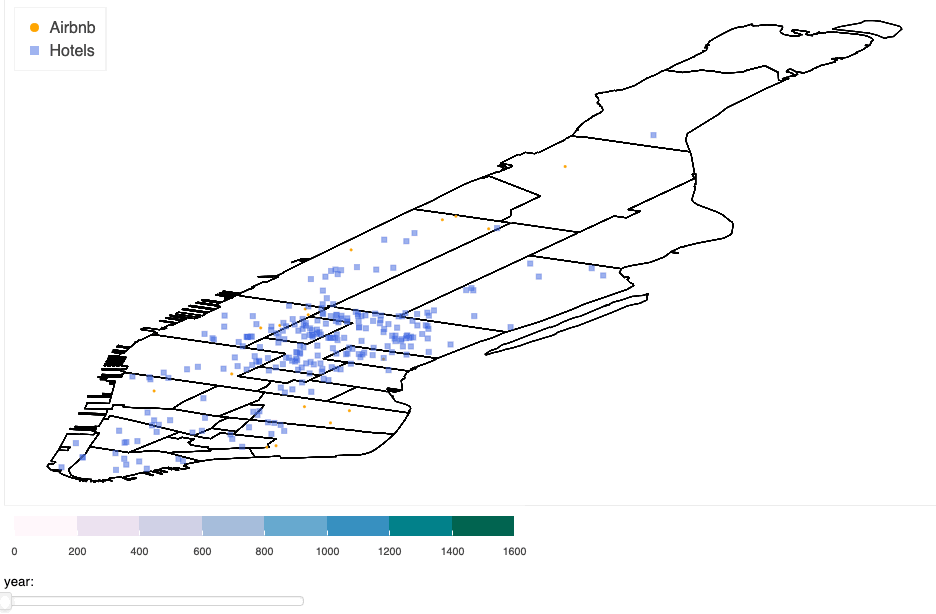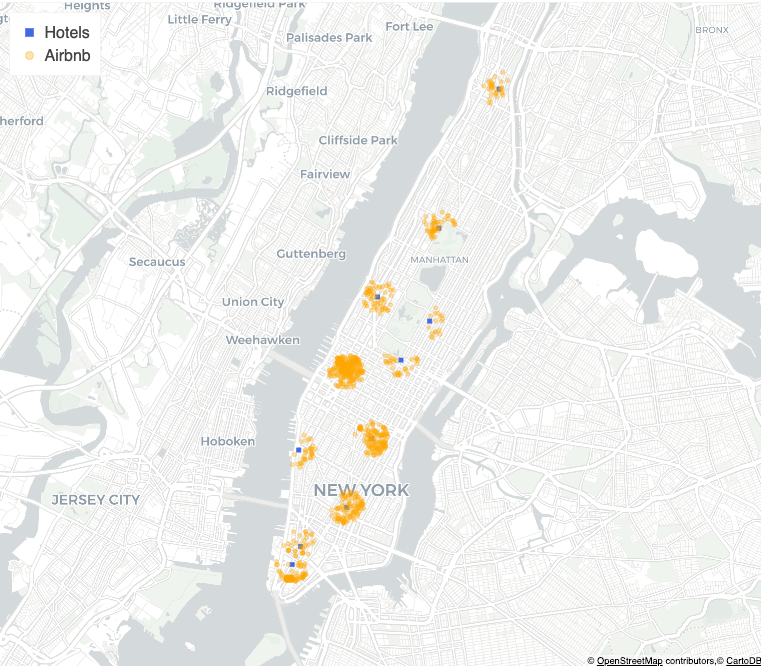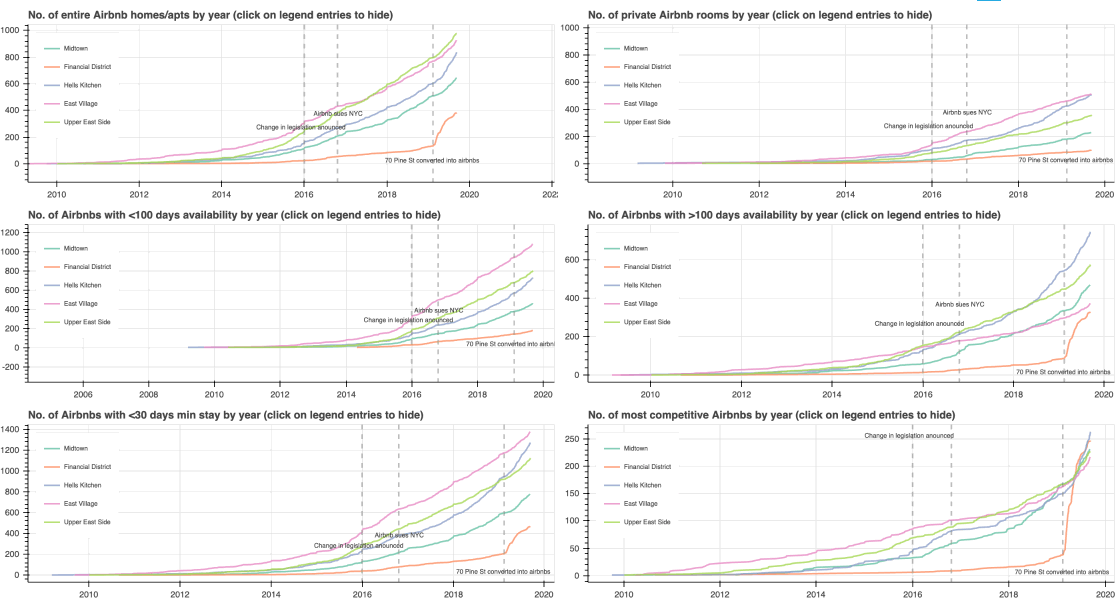
Airbnb vs Hotels
Manhattan, NYC
Task: aid the New York Hotel Association to understand their competitor airbnb and provide insights that may help them craft potential future legislation.
The following plots were created using Python, aiming to create various insights.
Tools: Bokeh, Googlemaps API, Airbnb API
Plot 1
The plot displays the number of the first time an airbnb was reviewed in the period 2009 to 2019, with a slider to show the growth rate and location of the airbnb over time. Visualising the development of the number of airbnb’s by neighbourhoods per year through the colormap and hover function. Allowed one to easily identify which neighbourhoods had been impacted by airbnbs the most. The locations of the hotels are also represented but are static for this period of time.
Plot 2
In order to identify which neighbourhoods the hotels in Manhattan face the most competition the following plot has been designed. A radius of 500m has been selected to find the density of Airbnb’s with the highest Tripadvisor rated hotel from each neighbourhood as a centerpoint.
Plot 3
Focusing on the development of five neighbourhoods that have experienced the highest growth rate of airbnbs. Displaying the effects of events such as new legislation has affected their growth rate.
The New York Times reported that “in October 2016 the state passed some of the toughest restrictions on short-term rentals. In most of NYC, it's now illegal to advertise or rent an entire apartment on a platform like Airbnb for less than 30 days unless the host is present and there are only one or two guests”.
The dashed vertical lines represent when the legislation was passed. Notable decline in the growth rate of entire homes listed on Airbnb occur following both events. On the contrary, the number of private rooms listed has not been affected and even experienced growth. Cox (2016), indicates the host simply changed the Airbnb "room type" to a "Private" or "Shared" room without changing anything else about the listing” .
Hence, the hotel association may continue pursuing lobbying the state to address this loophole .
Financial District
Plot 3 exposed a spike of Airbnb’s in the Financial District (FiDi) between 2018 and 2019. Using Plot 1 to take a closer look, all these Airbnb’s were found to be centred around one block/building. Further research reveals that a “hospitality start-up backed by Airbnb” known as Lyric was recently launched in the FiDi. Airbnb may have found a loophole for NYC’s short letting legislation. By taking out a long lease of the skyscraper and converting the apartments into short lets. Airbnb may continue to use the same if this loophole is not addressed as it would essentially allow them the benefits of operating as a hotel without the higher tax burden. The Manhattan Hotel association should further investigate such start-ups as these are types of Airbnb’s have the most competitive attributes therefore pose the highest competitive threat.
Limitations
Distance between hotels and airbnbs was calculated using Haversine formula, which assumes the earth is a sphere hence has a 0.3% error of margin.
Googlemaps API was used to search for the coordinates of the hotels using their address.
Recommendation
Checking if Airbnb hosts have changed any of the listing features after certain legislations were passed. This would help understand the number of Airbnb hosts partaking in said loopholes that should be covered in future legislations. explain ‘entire’ shift to room



